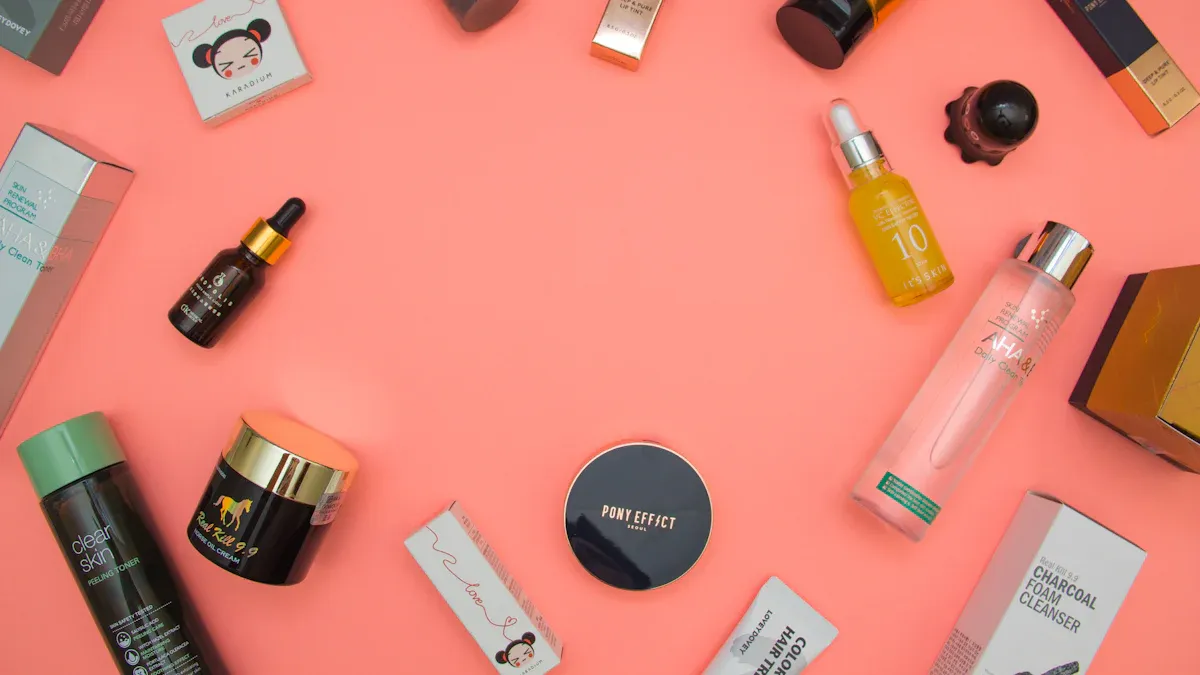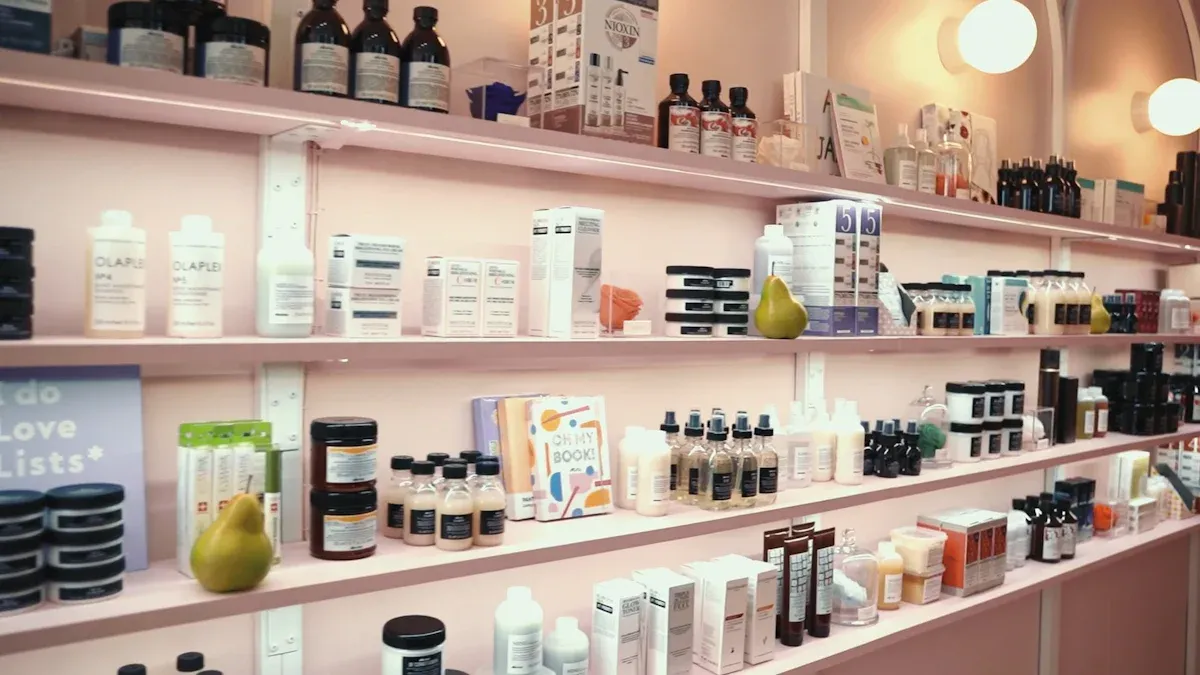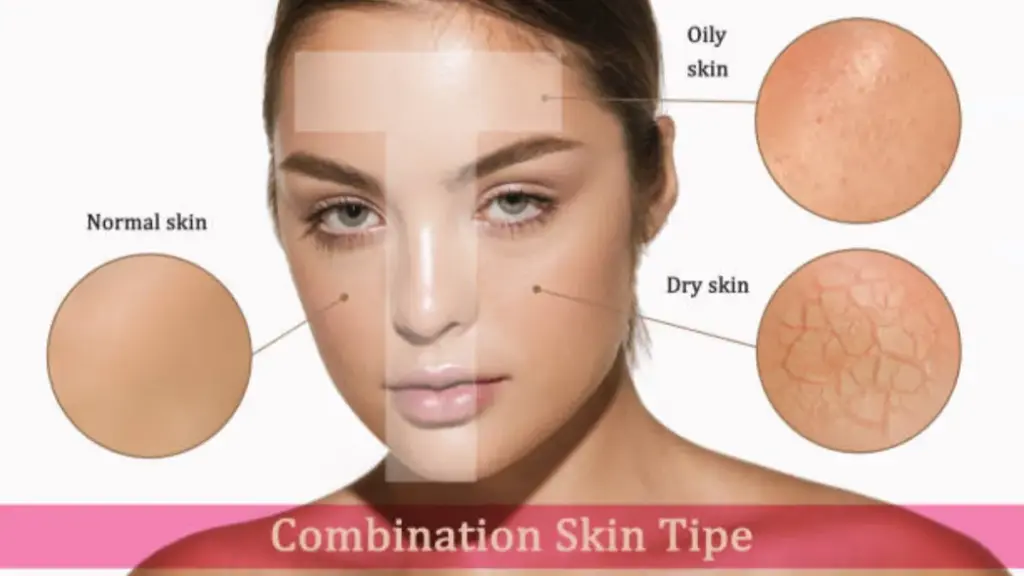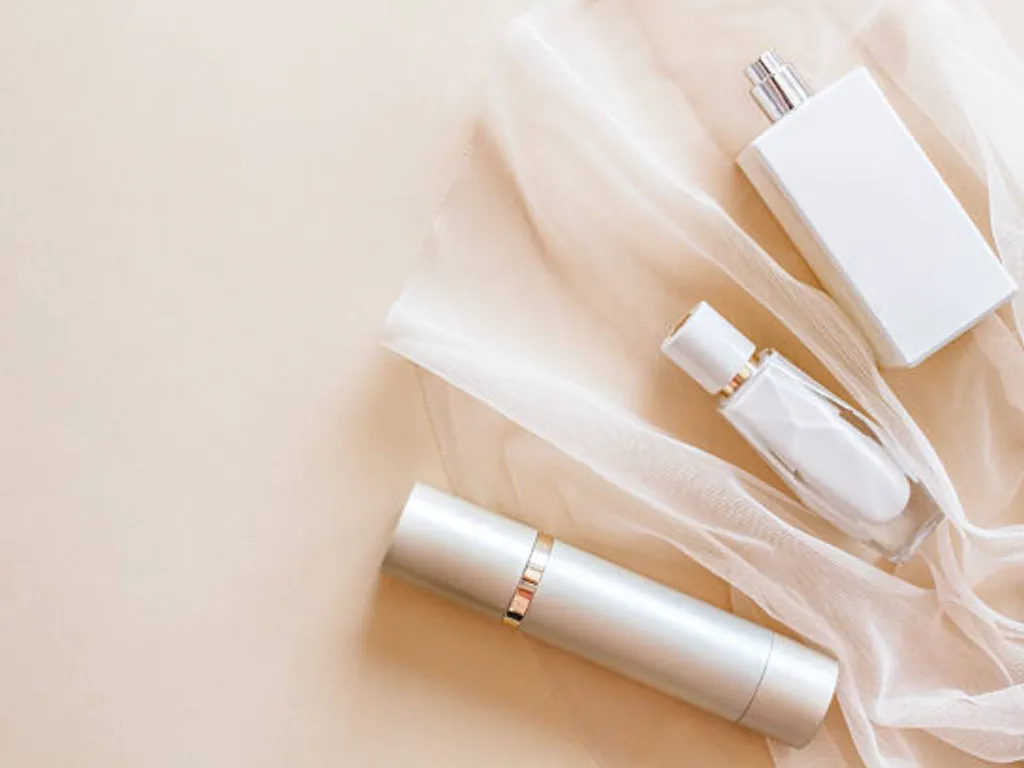
Market research plays a crucial role in the success of beauty products. It helps you understand what consumers want and identify gaps in the market. उदाहरण के लिए, 90% of women feel frustrated when searching for effective skincare solutions, highlighting the need to address their pain points. उसी प्रकार, 35% prioritize quality ingredients, showing a preference that brands can leverage. By analyzing trends like the rise in demand for organic products or the growing interest in luxury skincare, you can align your offerings with consumer needs. Staying informed about the beauty industry ensures you remain competitive in a fast-evolving market.
Define Your Target Audience

Understanding your target audience is the foundation of effective beauty market research. By identifying who your consumers are, you can tailor your products and marketing strategies to meet their needs and preferences.
Gather Demographic Data
Demographic data provides essential insights into the age, income, and location of your consumers. This information helps you segment the market and create products that resonate with specific groups.
Category | विवरण |
|---|---|
Age Distribution | Skin care product users – by age |
Income Distribution | Skin care product users – by income |
Location Distribution | Skin care product users – by gender |
उदाहरण के लिए, the global Beauty & Personal Care market is projected to generate $677.19 billion in revenue by 2025, with Personal Care being the largest segment at $293.08 अरब. These figures highlight the growing demand for skincare products across diverse demographics.
बख्शीश: Use demographic data to identify high-growth segments, such as millennials seeking personalized skincare solutions or urban consumers prioritizing convenience.
Understand Behavioral Patterns
Behavioral patterns reveal how consumers make purchasing decisions. By analyzing these patterns, you can better understand consumer preferences and design products that align with their expectations.
Brand Loyalty: Many consumers stick to brands they trust, especially those offering consistent quality.
Price Sensitivity: Some consumers prefer luxury skincare, while others seek affordable options that deliver value.
उत्पाद -गुणवत्ता: High-quality products often drive repeat purchases and positive reviews.
Social Influence: Younger consumers rely heavily on recommendations from friends, family, and social media influencers.
Age-Based Segmentation: Tailor products to specific age groups, such as anti-aging creams for Baby Boomers or acne solutions for Gen Z.
Gender-Based Segmentation: Develop inclusive campaigns that cater to diverse gender identities.
Skin Type-Based Segmentation: Offer solutions for oily, सूखा, or sensitive skin to address unique skincare needs.
टिप्पणी: Behavioral insights help you refine your beauty market research and create products that resonate with your audience.
Explore Psychographic Insights
Psychographic insights delve into the attitudes, values, and lifestyles of your consumers. These characteristics influence purchasing decisions and brand loyalty.
अध्ययन से पता चलता है कि skincare influencers impact purchase intentions through perceived similarity and brand image. While traits like attractiveness and trustworthiness may not directly drive sales, a strong brand image plays a crucial role. उदाहरण के लिए, conscious consumers prioritize sustainability and ethical sourcing, while high-end haulers value exclusivity and luxury.
Understanding consumer insights like these allows you to connect with your audience on a deeper level. By aligning your brand values with theirs, you can foster trust and loyalty.
बख्शीश: Psychographic insights are key to understanding consumer preferences and creating marketing campaigns that resonate emotionally.
Conduct Competitor Analysis
Understanding your competitors is essential for effective beauty market research. By analyzing competitors, you can identify their strengths, weaknesses, and strategies, helping you position your brand effectively in the cosmetic industry.
Identify Key Competitors
Start by identifying the major players in the beauty market. These include both direct competitors offering similar products and indirect competitors targeting the same audience. उदाहरण के लिए, leading companies like L’Oréal S.A., Unilever PLC, and Estée Lauder Companies Inc. dominate the global beauty market.
Competitor | Market Share Data |
|---|---|
L’Oréal S.A. | N/A |
Unilever PLC | N/A |
Procter & Gamble Company | N/A |
Estée Lauder Companies Inc. | N/A |
Coty Inc. | N/A |
The beauty products market is projected to grow significantly, तक पहुँचने USD 434.61 अरब में 2024 and potentially USD 725.25 के द्वारा अरब 2032. This growth highlights the importance of understanding your competitors to capture a share of this expanding market.
Evaluate Competitor Strategies
Analyzing competitors’ strategies provides insights into their success. Use frameworks like market share analysis, regression analysis, and cluster analysis to evaluate their performance.
Collect data on their pricing, promotions, and customer reviews.
Analyze this data to uncover patterns and trends that influence their market position.
By understanding these strategies, you can refine your approach and differentiate your brand.
Find Gaps in the Market
Market analysis helps you uncover unmet needs and untapped opportunities. Secondary research reveals areas where demand is not adequately addressed. उदाहरण के लिए, the rise of personalized skincare reflects evolving consumer preferences.
स्रोत | महत्वपूर्ण अंतर्दृष्टि |
|---|---|
A Comprehensive Guide to Secondary Market Research | Identifies market gaps and untapped opportunities. |
Effective Market Research for New Product Development | Highlights areas where customers are underserved. |
How the Skincare Market is Changing the Industry | Shows the shift toward personalized skincare solutions. |
By identifying these gaps, you can create products that address specific consumer needs, अपने ब्रांड को एक प्रतिस्पर्धी बढ़त देना.
Track Beauty Industry Trends

Staying updated on beauty industry trends is essential for effective beauty market research. By tracking market trends, you can identify emerging opportunities and align your products with consumer preferences.
Use Industry Reports and Publications
Industry reports and publications provide valuable insights into the global beauty industry. These resources highlight market trends, consumer behavior, and growth opportunities. उदाहरण के लिए, the U.S. self-care market is projected to generate $257 per capita in revenue by 2025. इसके अतिरिक्त, 21% हम में से. adults exclusively purchase natural or organic makeup, while skincare products account for over 40% of the organic and natural beauty market.
सांख्यिकी विवरण | कीमत | स्रोत |
|---|---|---|
हम. self-care market per-capita revenue projection in 2025 | USD 257 | |
Percentage of U.S. adults purchasing natural or organic makeup exclusively | 21% | |
Skincare products’ share of the U.S. organic and natural beauty market | ऊपर 40% |
These statistics emphasize the importance of identifying trends like sustainability and natural ingredients. Use this data to refine your product offerings and meet consumer expectations.
Monitor Social Media and Influencers
Social media platforms are powerful tools for tracking market trends in the beauty industry. Metrics like engagement rates, sentiment analysis, and branded hashtag popularity reveal consumer preferences. उदाहरण के लिए, beauty conversations on social media often reflect neutral sentiment, with joy being the dominant emotion.
Influencers play a significant role in shaping beauty trends. By analyzing their follower counts and engagement metrics, you can identify collaboration opportunities. Partnering with influencers who align with your brand values helps you reach a broader audience and stay relevant in the beauty market.
Leverage Trend-Tracking Tools
Trend-tracking tools and consumer analytics help you stay ahead in the competitive beauty industry. These tools provide insights into customer behavior and preferences, enabling you to identify emerging trends.
उपयोग consumer demographics and purchasing behavior to understand your target audience.
Analyze market reports and social media trends to anticipate shifts in demand.
Incorporate emerging trends into your product line to maintain a competitive edge.
Data analytics also supports predictive analysis, allowing you to optimize inventory and adapt to market dynamics. This proactive approach ensures your brand remains aligned with evolving consumer needs.
Use Primary and Secondary Research Methods
Combining primary and secondary research methods is essential for effective beauty market research. These approaches provide a well-rounded understanding of consumer preferences, industry trends, and market dynamics. By leveraging both, you can gather unique insights and make informed decisions for product development.
Conduct Surveys and Interviews
Surveys and interviews are powerful tools for collecting direct feedback from your target audience. They help you understand what consumers value most in beauty products and how their preferences evolve over time. उदाहरण के लिए, surveys can reveal which skincare ingredients resonate with consumers or how they perceive your brand compared to competitors.
Product | Effect Size (f²) | Relationship with Interest |
|---|---|---|
नींव | 0.53 | Largest contribution |
Serum | 0.17 | Medium effect size |
Acne | 0.25 | Medium effect size |
Lipstick | 0.28 | Medium effect size |
Mask | 0.25 | Medium effect size |
सनस्क्रीन | 0.09 | Small effect size |
Cleanser | 0.07 | Small effect size |
Eyeliner | 0.04 | Small effect size |
The table above highlights how different beauty products impact consumer interest. नींव, उदाहरण के लिए, has the largest effect size, making it a key focus area for many brands. वहीं दूसरी ओर, products like sunscreen and cleansers show smaller effect sizes, indicating niche opportunities.
बख्शीश: Use open-ended questions in interviews to uncover deeper insights into consumer needs and preferences. This approach allows you to explore topics that surveys might not fully address.
Organize Focus Groups
Focus groups provide a unique opportunity to observe how consumers interact with your products in real-time. By gathering a small group of participants, you can test product concepts, पैकेजिंग डिजाइन, or marketing messages. This method helps you identify what resonates with your audience and what needs improvement.
उदाहरण के लिए, during a focus group for a new skincare line, participants might express a preference for eco-friendly packaging or highlight concerns about ingredient transparency. These insights can guide your product development process and ensure your offerings align with consumer expectations.
Advantages of Focus Groups:
Immediate feedback on product features and usability.
Insights into emotional responses to branding and messaging.
Opportunities to observe group dynamics and social influences.
टिप्पणी: Select participants who represent your target audience to ensure the feedback you receive is relevant and actionable.
Analyze Industry Reports and Online Resources
Secondary research involves analyzing existing data से industry reports, market studies, and online resources. These sources provide valuable insights into the beauty industry, including market size, growth trends, and consumer behavior. उदाहरण के लिए, published market reports often highlight emerging trends like the rise of clean beauty or the growing demand for personalized skincare solutions.
Report Title | विवरण |
|---|---|
Beauty & Personal Care Report | Provides a comprehensive overview of the beauty industry, including consumer trends and market forecasts. |
Impact of COVID-19 on the U.S. प्रसाधन सामग्री & Toiletries Market | Analyzes the effects of COVID-19 on the beauty industry. |
Skin Care Market in the U.S. | Offers insights into the skincare market from both global and American perspectives. |
Beauty Devices: Market Brief | Details market size, growth, and trends for at-home skincare products. |
Clean Beauty Global Market Research Report | Analyzes the global clean beauty market, essential for brands meeting green consumer demands. |
These reports offer a wealth of information that can inform your strategy. उदाहरण के लिए, understanding how COVID-19 impacted the beauty market can help you anticipate future shifts in consumer behavior. इसके अतिरिक्त, insights from the “Clean Beauty Global Market Research Report” can guide you in meeting the needs of environmentally conscious consumers.

टिप के लिए: Combine insights from secondary research with primary data to validate your findings and create a comprehensive market strategy.
By using both primary and secondary research methods, you can gain a competitive edge in the beauty industry. Primary research provides unique, firsthand insights, while secondary research offers a broader perspective on market trends and consumer behavior. एक साथ, these methods ensure your beauty market research is thorough and effective.
Test Product Concepts and Gather Feedback
Create Prototypes or Samples
Prototypes and samples are essential tools for validating your product ideas. They allow you to test your skincare formulations in real-world scenarios and gather valuable insights from potential customers. Free samples, उदाहरण के लिए, help build trust and demonstrate the value of your product. They also encourage consumers to engage with your brand, triggering a sense of reciprocity that can lead to loyalty.
Samples provide direct interaction with your audience, offering insights that theoretical research cannot match.
Feedback loops from samples enable you to refine your product iteratively, ensuring it meets consumer expectations.
This approach minimizes financial risks, especially for startups and small businesses.
Prototypes also validate assumptions about user preferences. Observing how consumers interact with your product offers objective insights into market interest. उदाहरण के लिए, testing a new moisturizer can reveal whether its texture, महक, or absorption rate aligns with consumer expectations.
बख्शीश: Use prototypes to test specific features, such as packaging design or ingredient effectiveness, before committing to full-scale production.
Use Beta Testing with Target Consumers
Beta testing allows you to evaluate your product’s performance with a select group of target consumers. This process helps you identify potential issues and refine your offerings before launching them to a broader audience.
Quantitative data from beta testing provides actionable insights. उदाहरण के लिए:
साक्ष्य प्रकार | विवरण |
|---|---|
Customers rate product aspects on a scale (उदा।, 1 को 5) to gauge reception. | |
Usage Statistics | Quantifies how often and in what ways customers use the product. |
Error Reports | Counts and categorizes error reports to prioritize fixes based on frequency. |
इस डेटा का विश्लेषण करके, you can address usability concerns and enhance your product’s appeal. उदाहरण के लिए, if beta testers report that a cleanser leaves residue, you can adjust the formula to improve its rinsability.
टिप्पणी: Select beta testers who represent your target audience to ensure the feedback aligns with your market goals.
Collect and Analyze Feedback for Refinement
Consumer feedback is a goldmine for improving your skincare products. It highlights what works and what needs adjustment. Iterative refinement based on feedback ensures your product evolves to meet consumer expectations.
Consider this example:
Product Example | Version | Consumer Feedback | Iteration Changes |
|---|---|---|---|
Velvet Matte Lipstick | 1.0 | “Love the shade, but my lips feel parched.” | Added moisturizing agents |
1.1 | “Better, but still fades quickly.” | Enhanced staying power | |
Final | Cult favorite |
This iterative process transforms initial concepts into market-ready products. By addressing consumer concerns, you not only improve your offerings but also build trust and loyalty.
टिप के लिए: Use feedback from multiple channels, such as surveys, focus groups, and online reviews, to gain a comprehensive understanding of consumer preferences.
Effective market research for beauty products involves several key steps. You start by defining your target audience, analyzing competitors, and tracking trends in the beauty industry. Combining primary and secondary research methods helps you gather actionable insights. Testing product concepts and refining them based on feedback ensures your offerings meet consumer needs.
Ongoing research is vital for staying relevant in a dynamic market. Longitudinal studies reveal how consumer preferences evolve, helping you adapt your strategies. These studies also provide benchmarks and trending data, enabling you to uncover unique insights and refine your approach. By continuously monitoring the market, you can align your products with shifting needs and maintain a competitive edge.
बख्शीश: Regularly revisit your research to ensure your brand stays ahead of changes in the beauty industry.
उपवास
What is the most effective way to identify my target audience?
Start by analyzing demographic, behavioral, and psychographic data. Use surveys, focus groups, and online analytics tools to gather insights. This helps you understand your audience’s preferences, needs, and purchasing habits. Tailor your products and marketing strategies to align with these findings.
How can I stay updated on beauty industry trends?
Follow industry reports, monitor social media platforms, and engage with beauty influencers. Use trend-tracking tools to analyze emerging patterns. Staying informed ensures your products remain relevant and meet evolving consumer demands.
Why is competitor analysis important in market research?
Competitor analysis helps you understand what works in the market and where gaps exist. By studying competitors’ strategies, मूल्य निर्धारण, and customer feedback, you can identify opportunities to differentiate your brand and create unique value for your audience.
What are the benefits of using prototypes in product testing?
Prototypes allow you to test your product’s features and gather real-world feedback. This process helps you refine formulations, पैकेजिंग, and usability. It minimizes risks and ensures your product meets consumer expectations before a full-scale launch.
How do I collect actionable feedback from consumers?
Use surveys, interviews, and beta testing to gather feedback. Focus on specific aspects like product performance, पैकेजिंग, or pricing. Analyze responses to identify trends and areas for improvement. This ensures your product aligns with consumer needs and preferences.
















